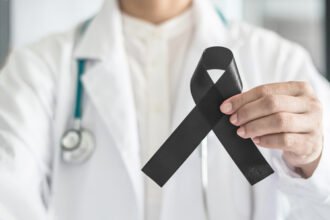The development and approval of new drugs is mandated by FDA’s CDER (Center for Drug Evaluation and Research) center, the apex government body governing this segment. Their job is to make sure that the drugs that are marketed in America are safe and at the same time, effective. So how does a drug get conceptualized, developed, marketed, and then transported to various parts of the country via PBMMI for storage, management, and transportation of drugs?”
The development and approval of new drugs is mandated by FDA’s CDER (Center for Drug Evaluation and Research) center, the apex government body governing this segment. Their job is to make sure that the drugs that are marketed in America are safe and at the same time, effective. So how does a drug get conceptualized, developed, marketed, and then transported to various parts of the country via PBMMI for storage, management, and transportation of drugs?”
There are fundamentally two types of drugs – prescription drugs and non-prescription drugs or OTC (Over the Counter). CDER, one of the six centers of FDA (Food and Development Authority), has the last say in both cases.
Let us take an example of how a drug manufacturer can work with the FDA to manufacture and market its drugs from the concept stage to the marketing stage, which can cost up to $1 billion for a single drug. That is why drugs cost what they do (though some prices are rather inexpensive for a variety of reasons), these companies spend a fortune to help out humanity and so they can sell the drug to remain in business.
Where do the drug ingredients come from?
The ingredients for the drugs are either naturally extracted from plants, herbs, or animals, or they are later synthetically developed in the lab. There are experts who help develop these drugs after carefully conducted medical experiments. The results are monitored and more experiments are conducted until the drug is working as it is intended to.
This sample drug is then taken to the FDA regulated center for testing and sampling. The drug can be in different forms like tablets, pills, injections, and sprays. The method by which they are injected also varies leading to different kinds of results based on their contents and applicability. After the clinical trials are conducted, the FDA then conducts its own tests and monitor results for potential side effects and threats.
IND Application
In case the FDA finds something wrong with the drug or some major side effects, the drug is sent back to the lab for further testing. If the data from the lab is promising, the developers of the drug take it to the next level by submitting an IND (Investigational New Drug) application to the CDER center of FDA. This stage of the process is necessary as explained in the IND Page that has been made live by the FDA.
What are clinical trials?
The clinical trials are allowed to begin only after the IND application is in effect. There is a 30 day gap before the drug sponsor can initiate clinical trials. This time is used by the FDA to conduct tests and find out if there is anything objectionable with the drug in question. The clinical trials mean that these drugs are tested on human subjects to see whether they are having the desired effect and whether there are any side effects.
Data is collected by the team to analyze the results and then improve upon the first batch of drugs based on patient zero’s feedback and results. The drug is then tweaked and perfected before it is sent to the FDA for approval. There are certain strict guidelines in place in order to protect the human subjects who volunteer for the trials. This is to protect the interest of the human subjects.
After the trials are conducted if the results are positive and satisfy the FDA’s norms, they are approved for marketing for mass consumption. The drug sponsor of the drug needs to file an NDA (New Drug Application) with complete information on the drug specification, manufacturing process, stability of the drug in question and bioavailability data, dosage and usage guides, methods of analysis conducted on the drug and various other studies conducted.
The official FDA NDA page explains the procedure in detail with guidelines and forms. There are resources on the page that will help you understand the procedure so that you do not waste crucial time.
Patent
Most of the new drugs fall under patent protection laws during the development phase of the drug. This is to protect the interest of the sponsors and the team behind the drug. ANDA (Abbreviated New Drug Applications) page provides several links to the guidance page, policies, laws, and resources to follow in order to secure your interests.
Non-prescription Drugs
The non-prescription drug products can be marketed under the NDA procedure as described above or via the OTC monograph. OTC monograph non-prescription drugs are like recipes that include the accepted kinds and levels of ingredients, dosage, formulas, and sometimes parameters to test them.
These recipes or OTC monographs are carefully monitored and continuously updated from time to time keeping in line with the development in the medical field. They are continuously updated to add new ingredients and other items. This is to make sure that the disease or bacteria do not become immune to the drugs and the treatment.
CDER SBIA
Drug manufacturers and small business organizations are allowed to take advantage of special programs that help them grow their business and meet their requirements. CDER SBIA provides information and like financial assistance and incentives for them so that they can grow.








